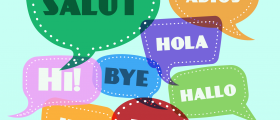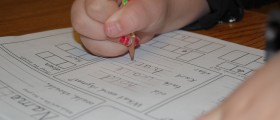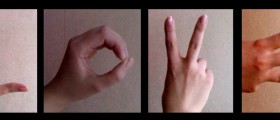
Dyslexia is described as a learningdisorder which manifests through difficulties related to learning howto read, write and spell correctly, experiencing problems when itcomes to performing word processing operations.
The term dyslexia was first coined in1896 by Dr. Pringle Morgan in England. This doctor described thiscondition as one affecting children not on the level of intelligence,since the patients he encountered were all perfectly mentally healthyones, but, rather, on the level of reading.
Reading Problems in Children
Dyslexia can be present in a specificfamily, recurring and indicating that there are genetic factorsinvolved in it. Also, there are numerous different types of dyslexia,affecting some people more than others.
About 15% of all American citizenssuffer from dyslexia. So, this condition is considered to be the maincause among problems in school. Fortunately, when dyslexia isdiagnosed timely and adequately, the chances of helping the affectedchild increase significantly.
Reading resembles riding a bike interms of performing a specific set of actions carefully andprecisely. Thus, once most of us learn how to read, we never forgetit and only improve these skills further. On the other hand, childrenwho suffer from dyslexia have problems in learning the basicsnecessary for mastering further steps of reading.
Namely, they cannot develop theirphonemic awareness and phonics, being incapable of noticing differentsounds in the words and letters they pronounce, as well as theeffects of combining different sounds in order to produce words.Simply, certain parts of their brains do not process the languageinformation adequately and reading does not become natural andautomatic in dyslexics. Rather, the process of reading triggersfrustration and a great deal of physical effort.
Moreover, children who suffer fromdyslexia commonly mix letters and sounds in words, especially whilethey are in the first grade. Also, they have problems recognizingwords quickly. Thus, they may find it impossible to connect soundsand form a word or to remember a sequence of colors and relate it tolinguistic units.
In school, children usually show signsof dyslexia through problems related to learning to talk, pronouncinglonger words, rhyming words, learning the alphabet, months of theyear, days of the week, names of colors and other such sequences,learning the names and sounds of letters and learning to write theirown names.
However, these problems are just thetip of the iceberg when it comes to dyslexia in young children.Additionally, they can be unable to identify syllables or speechsounds or the sounds of some simple words. Finally, dyslexia can alsomanifest through ugly handwriting, due to the fact that certain motorfunctions can be affected by this condition as well.
When dyslexic children become older,reaching their teenage years, their reading skills may not improve,staying at a child's level. Their spelling does not improve too. Dueto these states of affairs, they may be reluctant to write or read,avoiding these actions as often as possible. Naturally, this can leadto problems at school and difficulties related to learning anyforeign languages. These children may need more time to finish testsand understand the assignments they get at school and this caninfluence their performance and success negatively.
First Grade and Dyslexia
The first signs of dyslexia appear whenthe affected child reaches the first grade, since one's literacybecomes a necessity from this point on. The acquisition of thisaspect of language becomes an impossible task for dyslexic children,especially when it comes to recognizing phonemes, being the soundswhich form letters and, thereby, words and sentences.
The English Language has 44 phonemesand most people manage to learn how to use them automatically,combining them and manipulating them without any problems.Unfortunately, the dyslexic percentage of the human population is notso lucky. For them, written words like “volcano” and “tornado”may appear the same. However, even though dyslexic children may notnotice the difference between the two words, they will know what theobjects behind the words are. It is just that their brains cannotrelate a specific word for the picture information in its database.
Some dyslexics manage to overcome theirproblem. They are commonly referred to as compensated dyslexics andthey often manage to become very successful at architecture,engineering, science and music.
The treatment for dyslexics needs tostart at the first grade, when the first signs of this problem arenoticed. Even though many dyslexic children manage to overcome theirdyslexia on their own, numerous individuals remain stuck with itlater in life. As the years go by, dyslexia gets harder and harder totreat.
Therefore, children, their teachers andtheir family members need to know as much about this dyslexia aspossible, learning how to notice the signs of it and react timely,seeking proper assistance. Through such an early intervention, thechild may manage to go through later stages of his/her life withoutany reading or language manipulation problems.

















Your thoughts on this
Loading...